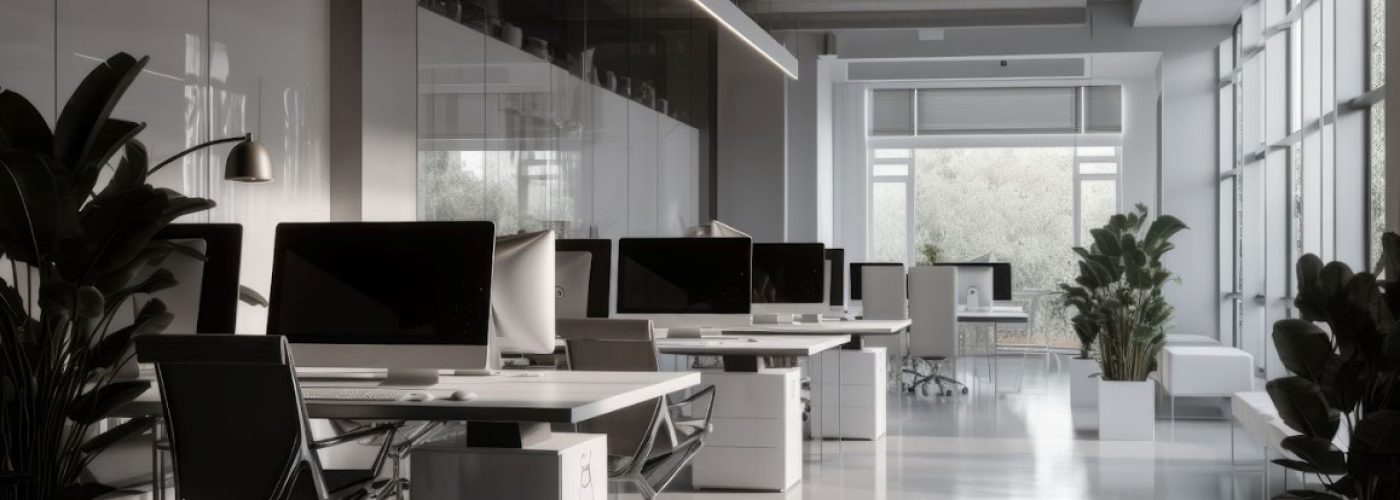In the ever-evolving commercial landscape, organizations are continually challenged to keep up with swiftly changing workstyles. A significant part of this adaptation lies in the design and utilization of office spaces. Over recent years, commercial architecture has seen a shift towards a trend in favor of flexible and agile office design. This approach aims to create multifunctional spaces that adapt to the diverse needs of modern employees, promoting innovation, collaboration, and productivity.
Why The Shift Towards Flexible And Agile Office Design
The shift in work styles, driven by technology and new generational expectations, necessitates a departure from traditional, static office designs in commercial architecture. Flexible and agile designs address this change, providing dynamic spaces that can adapt to varying tasks and needs. These designs incorporate versatile furnishings and diverse work zones and foster a spirit of collaboration.
The Benefits Of Flexible And Agile Office Design
Flexible and agile office designs offer several advantages to organizations, employees, and the environment.
- Enhanced Productivity: Flexible spaces empower employees to choose a workspace that suits their current tasks, boosting morale and subsequently elevating productivity.
- Collaboration And Innovation: These designs often incorporate communal and open spaces that stimulate collaboration among team members, sparking creativity and innovation.
- Sustainability: Adaptable office spaces reduce the necessity for extensive renovations when changing office layouts, resulting in less waste and more sustainable use of resources.
- Space Efficiency: Agile designs often optimize space, accommodating more people in less area and providing a range of settings for different work needs.
The advantages of the flexible and agile design are multifold—enhancing productivity, fostering collaboration, promoting sustainability, and optimizing space use.
Implementing A Flexible And Agile Office Design
Transitioning to an agile and flexible workspace doesn’t imply stripping an office down to its skeleton and beginning from scratch. More often, it requires the incorporation of progressive changes that convert a traditional office into a dynamic, responsive environment enhancing productivity, collaboration, and employee satisfaction.
1. Versatile Furnishings
The furnishings in an office play a pivotal role in creating an agile environment. Versatile, movable, and reconfigurable furniture offers employees the flexibility to tailor their work areas as needed.
- Mobile Desks And Chairs: These items can be relocated easily, enabling employees to adapt their workspace as required. They can also be grouped conveniently for team projects and separated for individual tasks.
- Modular Seating: Modular seating systems can adjust to the task at hand, creating individual workstations, group collaboration areas, or informal meeting spaces as required.
- Adjustable Tables: Height-adjustable tables are essential for ergonomics and can adapt to different tasks, from drafting plans to hosting a team meeting.
Investing in versatile furnishings allows workspaces to be functional, adaptable, and supportive of employees’ varied needs and tasks.
2. Zoning
Zoning in commercial architecture adds another dimension to the agile workspace. By dividing the office into different zones, each designed for a specific type of work, employees can transition to the area that best suits their current tasks.
- Collaborative Areas: These spaces are tailored for team-based tasks, brainstorming sessions, and group projects. They should feature ample seating, movable furniture, and technology such as whiteboards or digital screens.
- Quiet Zones: Quiet zones offer a haven for focused, individual work. These areas should minimize noise and distractions, featuring comfortable seating and ample desk space.
- Breakout Spaces: Breakout spaces provide a less formal environment for relaxation, informal meetings, or solitary work. These areas typically include comfortable seating, coffee facilities, and a more relaxed design aesthetic.
Zoning is an effective strategy to cater to different work needs, creating responsive workspaces that accommodate diverse workforce requirements.
3. Technology Integration
Technology is a cornerstone of the modern, agile work area. To support a flexible and mobile workforce, integrate advanced tech solutions into the workspace design.
- Smart Boards And Digital Screens: These facilitate collaboration and innovation, enabling employees to share ideas visually, conduct remote meetings, and work on digital projects collectively.
- Video Conferencing Facilities: These are essential for remote collaboration, allowing communication with off-site employees, clients, or partners.
- Cloud-Based Systems: Cloud-based software and systems enable employees to access their work from any device at any location, supporting a mobile and flexible workforce.
In today’s digital age, technology integration in workspace design is critical, facilitating collaboration, flexibility, and mobility.
4. Nature And Well-being
Employee well-being should be a priority in an agile workspace. The integration of biophilic design elements can foster a healthier, more pleasant work environment.
- Natural Light: Work areas with ample natural light have been shown to enhance mood and productivity. Incorporate large windows, glass walls, or skylights where possible.
- Plants: Plants not only purify the air and reduce stress but also create a more visually appealing environment. They can be integrated into the workspace through living walls, potted plants, or hanging gardens.
- Views Of Nature: Where possible, orient workspaces to provide views of the outdoors. If this isn’t feasible, high-quality images of natural landscapes can also have a positive impact on well-being.
Incorporating nature and well-being into workspace design boosts employee satisfaction and productivity, fostering a positive work culture.
The Takeaway
The shift towards flexible and agile office design in commercial architecture is a response to the evolving needs of the modern workforce. By understanding and implementing the principles of this design approach, organizations can create spaces that genuinely adapt to the changing workstyles, ensuring their relevance and success in the commercial landscape.

Building, Design & Construction Magazine | The Choice of Industry Professionals





